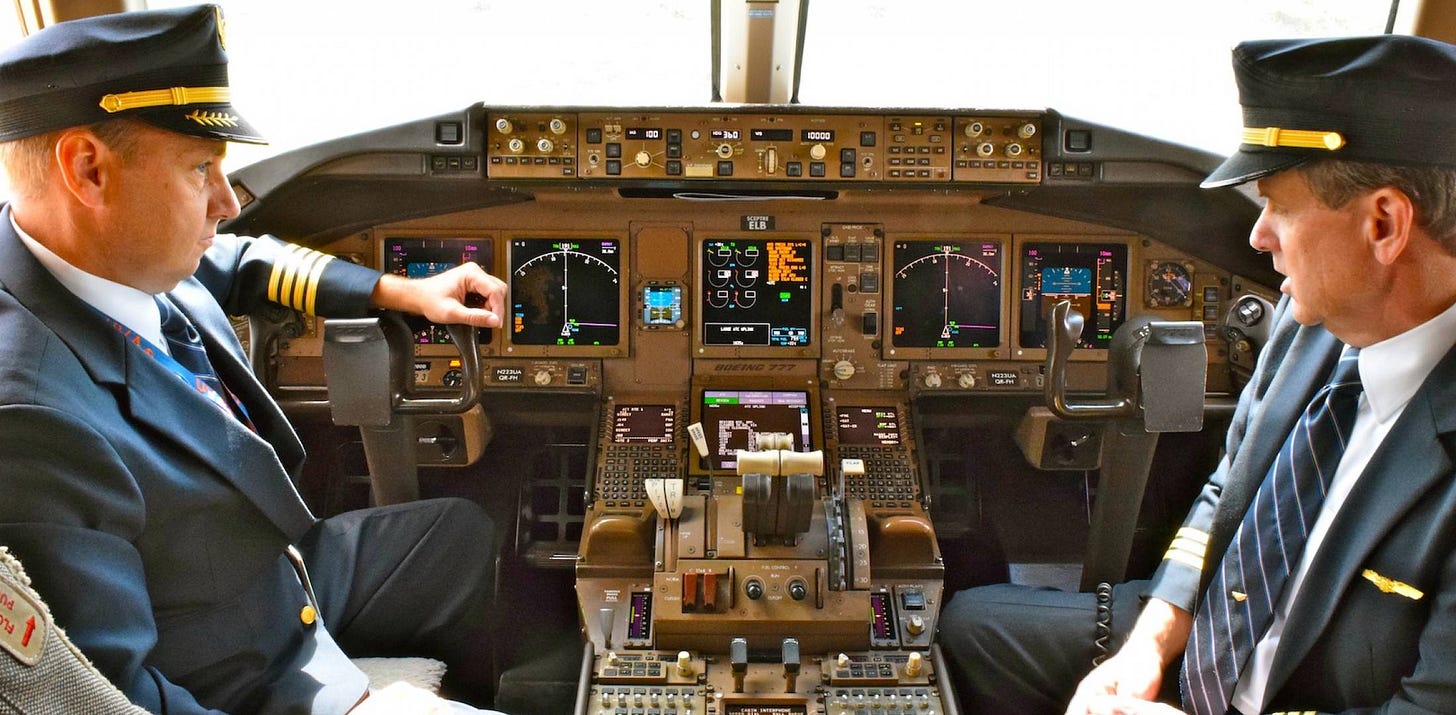In the pre-covid situation, there were close to ~52Million flights that took off and landed every year.
That is approximately 142,000 flights a day.
And the number of accidents, fatal or otherwise, was below 40 per year.
Thankfully!
As per Six Sigma definition: A six sigma process is one in which 99.99966% of all opportunities to produce an output are statistically expected to be free of defects.
(If you are interested to know more about Six Sigma, click here. )
For the Airline Industry – that is 40 defects /52 Million opportunities – which is clearly higher than Six Sigma.
While there is a combination of sophisticated hardware & software systems, world-class engineering, and automation at play to produce these numbers there is still a heavy dependency on the proficiency and diligence of the professionals and employees operating these systems and the machinery.
So, how do they do it?
The entire industry is run with industry good practices and SOPs – Standard Operating procedures. There are nodal agencies such as International Civil Aviation Organisation (ICAO) and International Air Transport Association (IATA) who collaborate to come up with Standards and Recommended Practices (SARPs), as well as Procedures for Air Navigation (PANS). Importantly, the policymakers, professionals, & employees of airlines, airports, air traffic management, ground handlers, and industry partners are all trained to follow these good practices.

One of the SOPs is the “Checklist” that the Captain of the aircraft goes through before every flight’s take-off and landing.
Irrespective of the total number of years of experience or the total flying hours under their belts, both the Captain and the Co-pilot go through the checklist each and every time before take-off and landing – and ensure that the journey is safe for the numerous passengers and also maintain an event-free track record for the airline.
Here is the comprehensive list:
Before-Takeoff Checklist
- Auxiliary fuel pump — Off
- Flight controls — Free and correct
- Instruments and radios — Checked and set
- Landing gear position lights — Checked
- Altimeter — Set
- Directional gyro — Set
- Fuel gauges — Checked
- Trim — Set
- Propeller — Exercise
- Magnetos — Checked
- The engine idle — checked
- Flaps — As required
- Seat belts/shoulder harnesses — Fastened
- Parking brake — Off
Final items
- Doors and Windows — Locked
- Mixture — Full rich unless above 3,000 feet MSL
- Lights — Landing, taxi, strobes on
- Camera — Transponder on
- Action — Engine instruments checked
Before-Landing Checklist
- Fuel selector — Fullest tank
- Directional gyro — Aligned with the magnetic compass
- Seat belts/shoulder harnesses — secure
- Mixture — Full rich unless airport above 3,000 feet MSL
- Cowl flaps — As required
Final items
- Landing gear — Down
- Propeller — High rpm
- Flaps — As required
Now, if you are a Sales Leader or a Head of Business Development, here is the question for you:
- What can we learn from this?
- What is the “Checklist” that you call out with your sales team for the large and complex, must-win sales opportunity that you are battling against the competition to win?
- Who calls out to whom? Who helps who?
- How do you identify the “gaps” or the “defects” in the plan and rectify them?
- How would this activity help you increase your win ratio?
What are your thoughts? Leave your valuable comments below and share your perspectives.
ps: The next time you sit in that aircraft (B-747 may be), which weighs approximately 180 times your automobile, flying at an incredible speed of ~800Kms/hr, thank the various SOPs that the Captain and his/her crew are following diligently.
